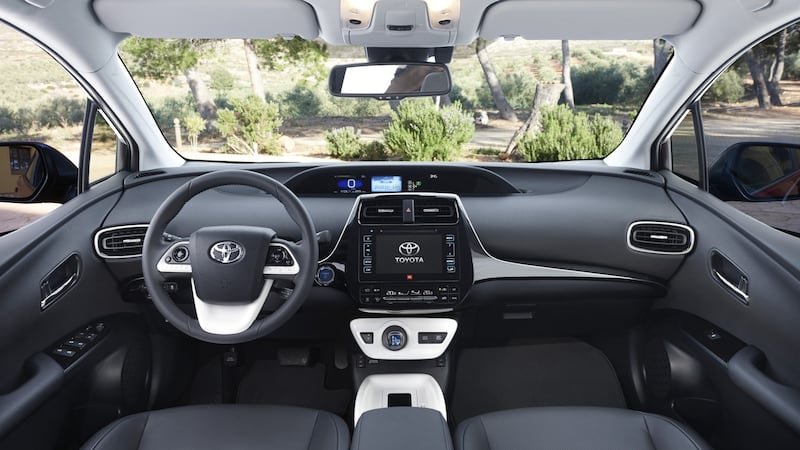The advent of cheap oil undermines efforts to convert motorists away from fossil fuels. Just as the motor industry rolls out a fleet of new hybrids and plug-in variants oil prices plummet to $30 per barrel. That’s bad news for the engineers and environmentalists. For all the pious promises, consumers only really make the eco-leap when it’s advantageous to their pockets.
While it would be foolhardy to expect prices to stay so low for long it has taken the sheen of the more expensive electric or hybrid models on the market.
The Prius, however, has survived the oil price rollercoaster in the past.

First introduced in 1997 it wasn’t the first hybrid on the market, but it was certainly the first to make any sales impact.
Toyota’s new fourth generation Prius may not have landed in time for the January rush, but that shouldn’t dent sales. The Prius brand is well-established, customers are waiting for the new car and, to cut to the chase, we can assure them it is worth waiting for. For a start, there’s the headline-grabbing fuel economy of 94mpg in old money or 3 l/100km in modern parlance. Emissions are now 70 g/km.
The styling takes a little getting used to, but that’s just because it is not the usual dull lozenge saloon. New LEDs front and rear give the car a distinctive presence at night.
Handling
There is a lower centre of gravity for the new generation Prius, which contributes to the car’s better handling. The car is also built on what
Toyota
has billed as its new global architecture – basically the nuts and bolts that will underpin a host of new models in the future, from compact sports cars to SUVs.
A new electric power steering system is also fitted and it is well weighted for the car, with decent feedback from the road. This is no racer, but when driven in the relaxed sense we suspect Prius owners prefer it’s a good mix of agility and comfort.
Power comes from its revised hybrid system, with notable improvements in engine efficiency and a much smaller nickel-metal hydride battery pack.
Total output of 122bhp comes with emissions of just 70g/km and a respectable acceleration time of 10.6 seconds, which actually feels quicker when behind the wheel. The big news is in refinement. Motoring hacks have long complained that the continuously variable transmission (CVT) automatic gearbox on the current model was dire. It was so focussed on fuel economy that it turned the Prius’s 1.8-litre petrol engine into a whining pain any time you needed to hit the throttle.
Toyota’s response was that Prius owners didn’t drive that way and were far smoother on the throttle than big-footed car reviewers. We never bought that; motorists shouldn’t have to change their driving style to avoid the engine wailing.
The new Prius is a much better proposition in this regard. It still has a CVT that seems to make the engine hit high notes when you accelerate, but it is much more muted than before.
Internal space is noticeably improved: whereas the previous iterations were more akin to booted hatchbacks in the guise of a Focus saloon or a rival to the likes of the Golf, this version is well able to mix it with the rest of the mainstream saloon car market. The cabin has also been improved. The hard plastics still have a look and feel of a dressed-up supermini though, and features like the optional wireless phone charger will be lost on owners who have Apple phones. Similarly the touchscreen controls for the centre screen are awkward to use while driving and lack any tactile feedback.
Safety technology
The new Prius comes in two trims: the regular grade for €31,450 or the Luxury trim for €33,550. Entry level gets you 15-inch alloys, auto air-conditioning, the new 7-inch multimedia touchscreen and adaptive cruise control. Toyota is campaigning on its safety technology these days so lane-keeping assist and city brake are all standard features. For the extra €2,100 you get 17-inch alloys, a leather steering wheel, front heated seats, blind spot monitor and the new rear cross traffic alert system which alerts you to anyone approaching from either side as you reverse out of a parking spot for example. It’s a very useful feature for busy car parks, but I’m not sure there is enough there to warrant the extra spend on Luxury grade. On the other hand €31,450 is really good value for what’s on offer.
With a fleet of hybrids and electric cars on offer, this Toyota doesn’t enjoy the free run it had on the eco-market in the past. Even within the Toyota range hybrids are increasingly an option on most models. Yet the Prius makes a statement the others don’t and remains a benchmark for the format. Fuel economy of 3 l/100km (94mpg) is still a headline figure in anyone’s book. And there is a host of technology to help you reach that target, including a points system that gives you tips on being a better eco-driver.
However, as with all hybrids, take it out on the motorway where the 1.8-litre petrol engine does most of the work and you are unlikely to reap much reward from the battery powerpack. If you are a motorway driver most of the time then probably the Prius is still not for you.
Prius owners are making a public statement with this purchase, but in recent years it had lost ground in the realm of eco-consciousness to the likes of the Nissan Leaf. The Prius looked relatively old tech. This new model puts it firmly back in the mix, with the promise of a properly usable range combined with a fuel economy few fossil-fuelled rivals can match at a relatively affordable price.












